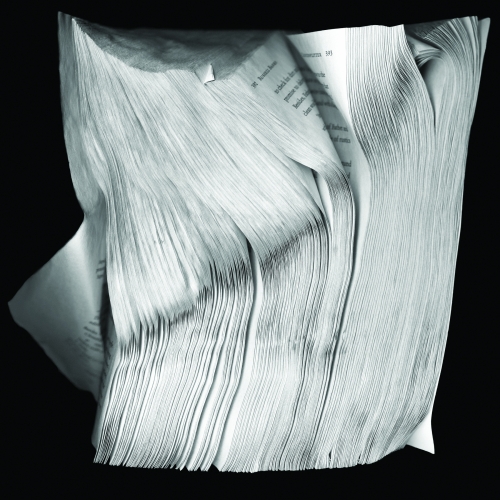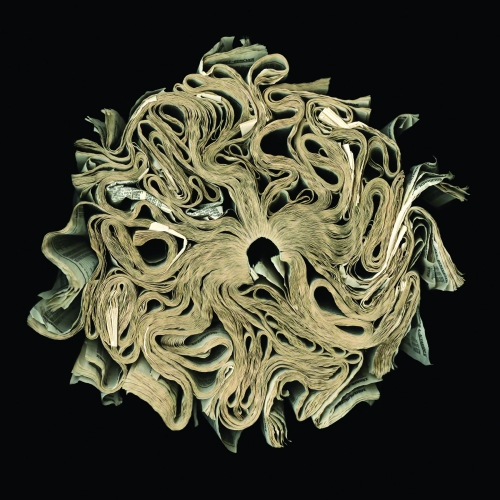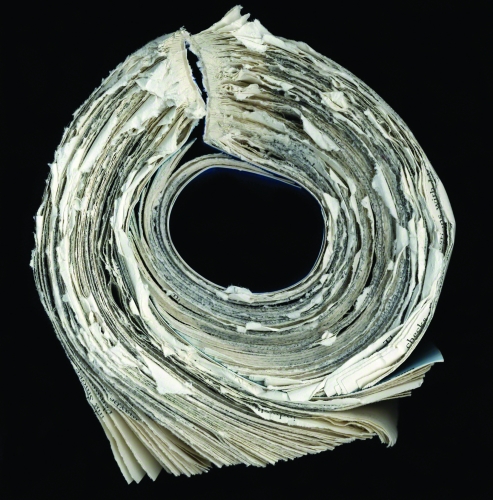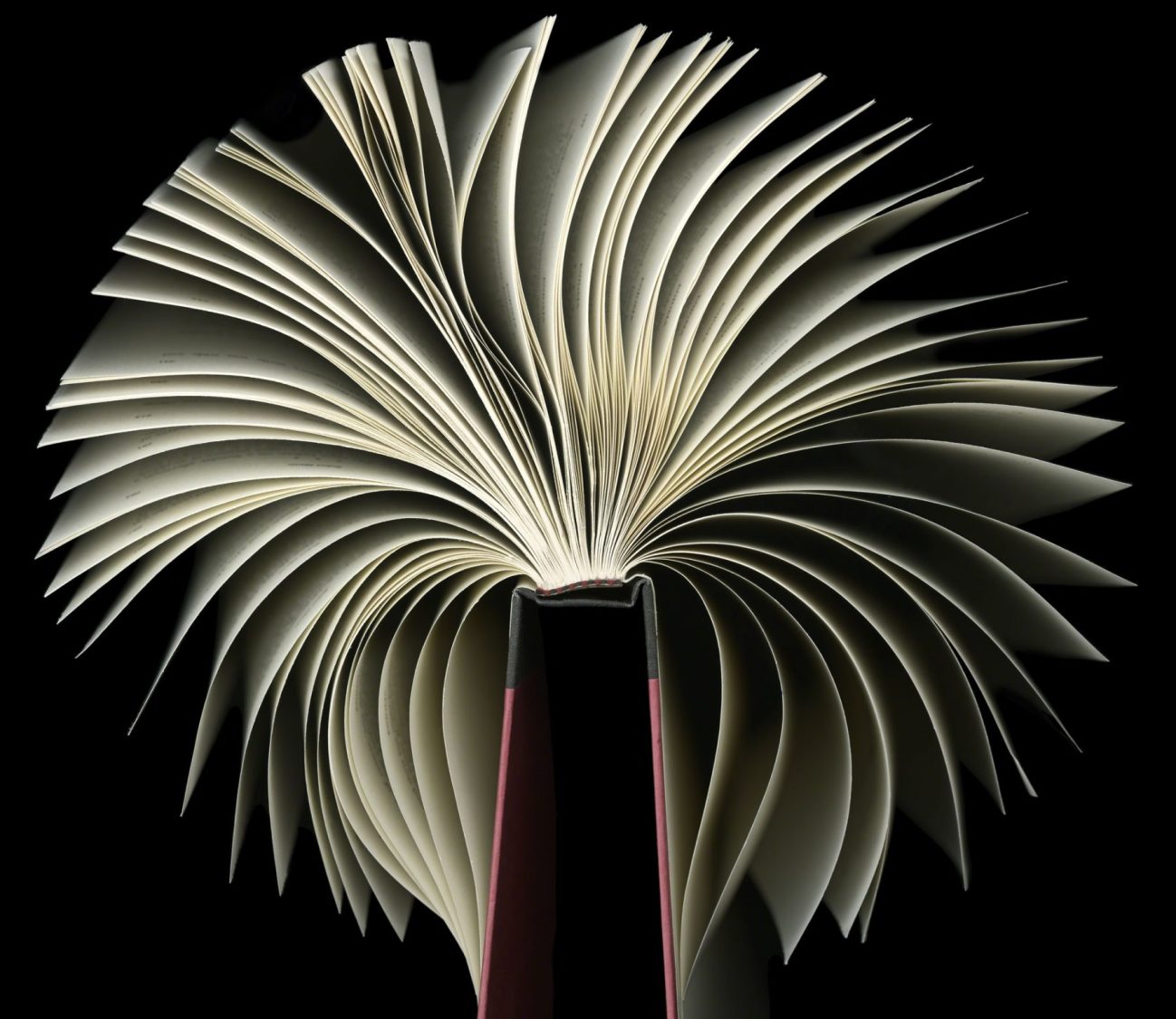There’s a scene in the fine and dark TV series Breaking Bad in which a villainous drug dealer, half-dead and half-blinded by a poisonous gas, stumbles down a suburban street and runs into one of his adversaries. The dealer can see just enough to recognize who it is, but he can’t see enough to realize, when he lurches off in a panic, that he’s heading straight for a large cottonwood tree. He slams into the trunk and knocks himself out cold. In the midst of that scene of tense dramatic confrontation, the resolution—a moment of classic slapstick reversal—is unavoidably funny.
We do seem to love narrative reversals. We love to see characters not just being wrong but also discovering that they are wrong. Yet for ourselves, we want to be right. We want to understand—understand ourselves, our world, our relationships. We may generally believe that as we go through life, our understanding, our basic rightness about things, grows. Or even if we don’t believe that, then we may construe that very doubt as a kind of growing rightness. So why do we love the moments in narratives of all kinds—stories, movies, epics, plays, novels, TV shows—when exactly the opposite happens, when people are proven categorically to be wrong? Part of the answer may be that it sparks a recognition of something about how our life works: that being wrong can, and often does, bring us closer to being right.
Tragedy just as much as slapstick thrives on reversal. In Sophocles’ Oedipus Rex, Oedipus is welcomed to the plagued city of Thebes as a hero, determined to root out the ill afflicting its citizens. He works tirelessly to relieve the city of its curse, little suspecting its true source. The story is timeless and universal, so much so that Freud placed it at the core of his theory of psychoanalysis. But its universality is not limited to its application to a speculative theory about unconscious desires. There is something in its very structure that continues to speak to us. The play’s key moment, the dramatic pivot on which the action turns, is when Oedipus discovers to his horror that the real source of Thebes’ problem is none other than he himself. His true identity is not that of a hero but of an incestuous parricide.
Aristotle had a term for this kind of sudden reversal: peripeteia. He saw it as essential to the success of any narrative. Peripeteia literally means a “turning around.” A healthy, wealthy king becomes a blind, outcast pauper (Oedipus); a dutiful sister winds up a convicted felon (Antigone); a great warrior-king becomes a wandering seafarer who in turn becomes a settled farmer (Odysseus); and so on. But the best peripeteia, according to Aristotle, are those that involve more than just a change in fortune. They have an additional ingredient, anagnorisis—or “recognition”—a moment when a character discovers for himself his own wrongness. This, says Aristotle, characterizes the highest, most affecting kind of drama.
The illumination here is less concerned with matters external as with internal problems. The character undergoes a reversal in her construal of reality. What she thought true turns out to be false, and what she thought false turns out to be true. Pride and Prejudice has one of the purest examples of this, when Elizabeth Bennett realizes that everything she thought about Darcy is wrong and that the problem is not his pride but her prejudice. The entire story turns right there. Another clear example is King Lear. Lear is taken in by the flattery of his deceitful daughters, Regan and Goneril, and he banishes the loving and loyal Cordelia, but he finally realizes that he got it upside down. In that realization, out on the heath in the storm, he loses his sanity but regains his humanity. Though it comes too late to avert horrible tragedy, there is, in seeing the truth, a measure of redemption.
Some have even argued that a fictional story is completed by such a moment of awakening to oneself. Short stories often focus in on potential turning points in their characters’ lives, where they are presented with an opportunity to learn about themselves, whether or not they take it. Many novels have such moments as their fulcrum. In War and Peace, Pierre, a lifelong seeker, is taken prisoner by the invading French, and in his unwonted experience of imprisonment and poverty discovers a freedom his wealth could never buy him. Pip, in Great Expectations, realizes late in the story how his social ambitions have occluded his life’s real treasure, namely, the blacksmith Joe Gargery’s love and friendship. Nearly always, in great literature, there is some kind of turning point in a narrative arc which is also a turning back—something like Dogen’s “backward step that shines the light inward”—wherein a character is granted an opportunity to understand himself in a different or better way, and it’s that that makes all the difference.
Sometimes, too, peripeteia can arise less in the character and more in us, the readers, as we realize, perhaps along with an earlier dose of misdirection on the writer’s part, that we ourselves have been viewing things wrong. There’s the point in The Great Gatsby, for example, when we realize that Gatsby is a crook and that the narrator Nick Carraway’s presentation of him has been distinctly rose-tinted. That shift in angle of vision can bring a tremendous release of energy and pleasure.
We love in our stories to see someone being wrong. We even love to be wrong ourselves. So what is it about peripeteia that makes it resonate so deeply?
Peripeteia as defined by Aristotle is a literary device. But it seems to share a deep resonance with the way our actual lives unfold. Our lives are stories too, after all. Peripeteia of one kind or another is a key element in the path narratives of many spiritual traditions. Indeed, it’s hard to imagine a spiritual path where some kind of “turning around”—whether from worldly concerns to more divine ones or from self-regard to other-regard—doesn’t play a key role. Early Christianity stressed the moment of metanoia—the change of mind that brings a deep shift in one’s orientation. Metanoia may also be translated as “repentance” and in that sense represents a recognition that one has been wrong. Or take the story of the Buddha. Prior to his awakening, he recognized the limitations of a life of materialism, he left the comforts of princely life to live as a wandering ascetic, he mastered the meditation systems of his day, but it was only with awakening that he discovered how wrong he had really been. As recounted in Zen tradition, on the night of his great awakening, as he sat in meditation, upon seeing the morning star, revelation struck, and he cried out, “I and all beings have simultaneously attained the Way,” affirming that he and the rest of the world were not two things.
Zen, almost since its inception in China, has been strongly influenced by its “sudden school” teachings, which emphasize breakthrough moments of revelation, and they too are often couched as recognitions of having been wrong. When after years of discouraging practice, Kyogen accidentally flicked a broken piece of tile against a stalk of bamboo, the sound is said to have awakened him. In the verse he composed afterward, he said, “One knock, and I have forgotten everything I ever knew.” His whole view of the world was knocked away.
If we borrow Aristotle’s term and apply it to the spiritual path, we find there is often a striking congruence. Perhaps this is why it’s so compelling in narrative. It affirms a deeply felt intimation that our lives proceed through being disabused of our preconceptions. We are after all vulnerable, fallible, and self-deluded creatures who will never fully comprehend our existence and nature. No wonder hubris was the favored fault of Greek tragic heroes or that Christianity posits pride as the gravest sin. A reversal knocks us back. If nothing else it teaches us humility. It shows us the limits of our understanding.
The wisdom and liberation offered by a moment of peripeteia may have more to do with letting go an old way of seeing the world than with the discovery of a new one. Many spiritual paths hold up some kind of benchmark experience as a pivot in the story of an individual’s practice. In Pure Land Buddhism there is shinjin, in Zen there is kensho, in Theravada Buddhism there is sotapatti, or “stream entry,” in Christianity there is repentance, and so on. There are particular benchmark experiences for particular approaches. These are neither as definitive nor as universal as we might like to believe. Other paths, other benchmarks. Yet they all have one thing in common: a reversal in how one has construed the world. Before the reversal—whether it is profound or subtle, sudden or gradual—one sees the world in a certain way, one thinks that way correct, and that way is a big problem. The reversal entails seeing one was wrong, and this allows one to engage with one’s life in a better way. In the sense that the common thread is the discovery of one’s error, the fit with peripeteia is extraordinary.

Zen’s tradition of koan study can be framed as a way to encourage in the student a repeated giving up of her habitual ways of seeing and knowing. Whether or not this is rightly described as “cutting off thoughts,” it always involves a letting go of one’s certitudes and complacencies, and entering a state of “not-knowing.” This is where a koan’s capacity for liberation lies—not in the discovery of some new knowledge but in its power to help us give up our familiar template of knowing. It is less about the landing than the leap. In this sense, koan training favors “reversals” explicitly, seeking to resolve our existential angst not so much through an arrival at a new state of understanding as through the relinquishing of understanding itself. With that relinquishment, we are free to meet the moment with a fresh intimacy, engagement, and compassion.
Related: Lighten Your Load
Seeing the contingency of our own way of construing experience, being shocked out of our view of things, instructs us spiritually perhaps less by the content of what we see than by what it models—namely, that we have been wrong. The point is not that we then see “the truth,” or some “pure” or “unconditioned” reality, however much we may feel that we have. That would in effect soon crystallize into just another view. The liberative power of ongoing koan training is that it offers no final story in which to settle. Again and again, we are knocked by a peripeteia, which we might call an “insight” because it leads to our experiencing self and world in a new way. Yet if we examine the content of the insight, it may be pertinent primarily to our previous way of seeing things: that is, we discover it was faulty. It didn’t hold up the way we thought. We tend to think the gift is to have seen something new, but perhaps it’s more to have seen through something old, and the real discovery may not be a truer formulation but the giving up of any view. That’s where the blast of fresh air comes in, that’s where the real waking is—where there is neither the old dream nor a new one but just the marvelous shock, indeed the relief, of finding we had been wrong.

Chekhov said that the fiction writer’s task is only to present a problem fully. Once he has done that, the story is complete. One interpretation of what he meant by “fully” is that he wanted the problem to be manifestly intractable. In “The Lady with the Dog,” for example, an adulterous couple are shown to have found a real enduring love that is deeply redemptive yet also to have stumbled into an impasse. For various reasons, they simply cannot live together. Our reflexive desire to find resolution is thwarted, and this may be the key to the story’s timeless power: there really is no solution. It’s that that paradoxically offers us, the reader, an unexpected sense of liberation, which derives—once again—from our giving up our need for resolution. It comes as a total surprise. Chekhov has practiced an almost magical misdirection on us: we thought the story was all about the protagonists and their love, yet somehow, as we leave them in their quandary, we discover it was more about us and our own thirst for conclusion. He leads us to the brink of the resolution we desire, then divests us of that very need. Somehow we are left better off for our disappointment.
This kind of reversal in understanding, or setting-back of our way of seeing things, leads not just to a shift in how we view the world but, most importantly, to new levels of empathy, to a sense of connectedness to others, if not to all beings, that can radically undermine our normal faith in ourselves as self-sufficient entities. As our preconceptions are torn open, there comes a corresponding opening of our affections. In other words, these reversals do not have arbitrary or scattershot consequences: humility is, after all, the ground zero of spirituality, from which other helpful conditions may arise, such as gratitude and compassion. Reversals seem to lead us to a discovery of radical connectedness, which itself has implications for our actions.
Here too literature and spiritual paths run in parallel. It turns out their processes are far from ethically neutral. Somehow when the limits on our world get undermined, and we see it in a new and better way, freed of some of our mental and psychological filters, our ability to relate to it gets better. In this way, peripeteia is instructive. Peace and kindness have their best shot at establishing themselves when we accept our own inadequacy, when limitation and error become aspects of ourselves we can embrace rather than strive to mask. There is surely no Christianity without hamartia—in Christian writings often translated as “sin,” though the Greek word literally means “missing the mark.” To embrace one’s “sinfulness,” or error, and to repent is to open oneself to a radical and positive turning around. Similarly, as Nansen told Joshu, we are more likely to stumble upon the Way when we cease our vaunting efforts to “attain” it. Rather, when we succumb with grace to the fact that we are, basically, hopeless cases, we have an extraordinary opportunity to discover in what sense we are not hopeless. Or to put it another way: being a basket case can turn out to be the most wonderful thing. Or more simply: being wrong can be the best thing that ever happened to us.
A powerful fictional example of this is Tolstoy’s short novel Master and Man, which takes place on a single winter’s night. A wealthy businessman, accompanied by his servant, heads off into a terrible snowstorm in a horse-drawn sleigh. He has sniffed a business opportunity and can’t bear to let the weather delay him. The businessman rides wrapped up in furs, while his servant shivers beside him in miserable rags. The weather worsens, they get lost and finally stuck in a drift. Night wears on, and though the master realizes his servant is severely cold, he worries only about his business dealings and the cigarettes he can’t manage to light. It’s a night of hell, but somewhere in the middle of it, the master notices his servant is actually dying of cold. Spontaneously, against all his prior impulses, he rips open his fur coat and covers the dying man with all the warmth he can muster. In that one act of perfect self-sacrifice, all his troubles drop away, and a sweet, delirious joy unlike anything he has ever known sweeps over him.
It is surely one of fiction’s great experiences—this moment when selfishness turns on its head, and to his own amazement, the man discovers what an error his instinct for self-preservation has been, blocking him from a far greater life. When the reversal comes, we feel it as a shock to us as much as it must be to him. We too are shocked awake, into an empathic identification with the compassion he suddenly feels.
One sees a comparable pattern in various types of psychotherapy. Cognitive therapy seeks to bring us to a discovery of our hidden beliefs and then to expose their falsehoods. In the moment of seeing their error, we experience a renewed possibility of freedom and affection. In psychoanalysis, whatever one’s life narrative is, one retells it, and through that process, the significance of trauma in the narrative is reshuffled and turned around. Turning to philosophy, we see in Socrates a comparable method: using questions to unearth hidden assumptions and then questioning those assumptions until they are given up. Thus Socrates’s famous creed: “I know only one thing: that I know nothing,” which is curiously reminiscent of such Zen locutions as Nansen’s “dropping the net of knowledge,” and Kyogen’s “forgetting everything I knew.”

Perhaps when we read fiction, there’s a deep recognition that this is how life works. Whether conscious or barely recognized, there’s a resonance, an understanding that something embedded deep in the nature of experience is being revealed, namely, that we grow spiritually through reversals. Life has to be this way, because we can never see more than we can see at any one time and because the way we see things is always the problem.
After all, what is an “Aha” moment, an insight of any kind, if not a realization that our habitual view has been misguided? It’s odd that we should so commonly miss this: we tend to cherish the new insight rather than notice the more important giving up of the old viewpoint. Perhaps this is the very mechanism by which we all but inevitably end up turning the new view into the next old one, which must in turn also be relinquished. And so our path goes on.
What if we love the art we love not for its style, form, or content but for something else, a quality of being its creator may not even have been aware of transfusing—a clarity, a stillness-in-action that is a component of a life of compassion? In other words, one consequence of the interruption of the story of our lives produced by a spiritual reversal, and paralleled by a fictional one, may be that with the exigencies of personal narrative suspended, we can open up to a vivid sense of connectedness. Story can awaken this in us, as our own “sympathetic understanding,” as George Eliot called it, is aroused not only by a character’s troubles and reversals but also by the fact that we ourselves are practicing it, even as we identify with the characters and empathize with them as if they were we ourselves.
As the writer Karen Armstrong has said of her scholarly work [Tricycle, Summer 2003]:
My study is a spiritual quest. Studying texts is my form of prayer and meditation, and often, while studying, I experience moments of awe and wonder. The effort of getting beyond my own preconceptions to enter another form of faith and thought is also a means of transcendence—a transcendence of self. . . A scholar called this discipline ‘the science of compassion’ because in this kind of study you have to put yourself to one side and learn to feel with others.
This is exactly what fictional peripeteia can also teach us. The suspension that the literary device brings us to, between the way we have been and the way we will become, is the key. Literature models—it enacts—a truth of spiritual life: that there are moments we come to when our thinking is suspended, and when an old knowing has been dropped and the attachment to a new knowing has not yet arisen. That gap is everything.
Thank you for subscribing to Tricycle! As a nonprofit, we depend on readers like you to keep Buddhist teachings and practices widely available.
